Parklets add to outside dining options in downtown Bloomington
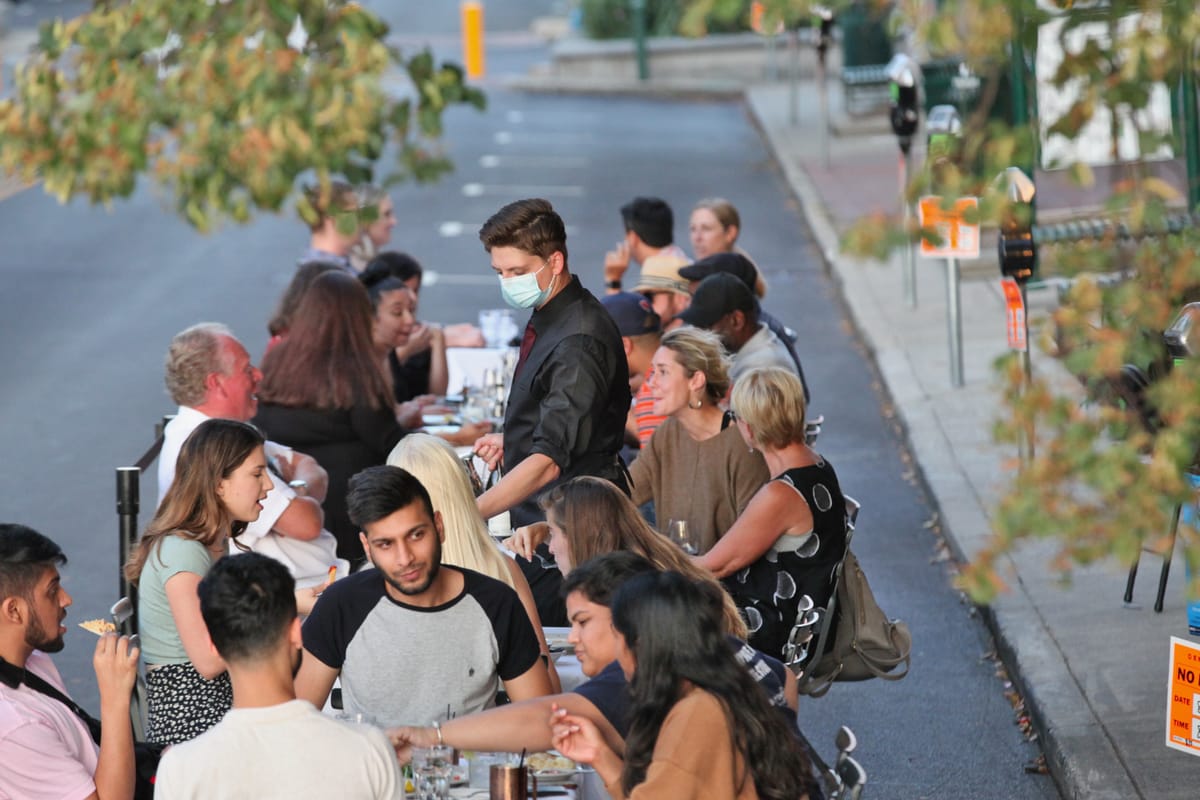
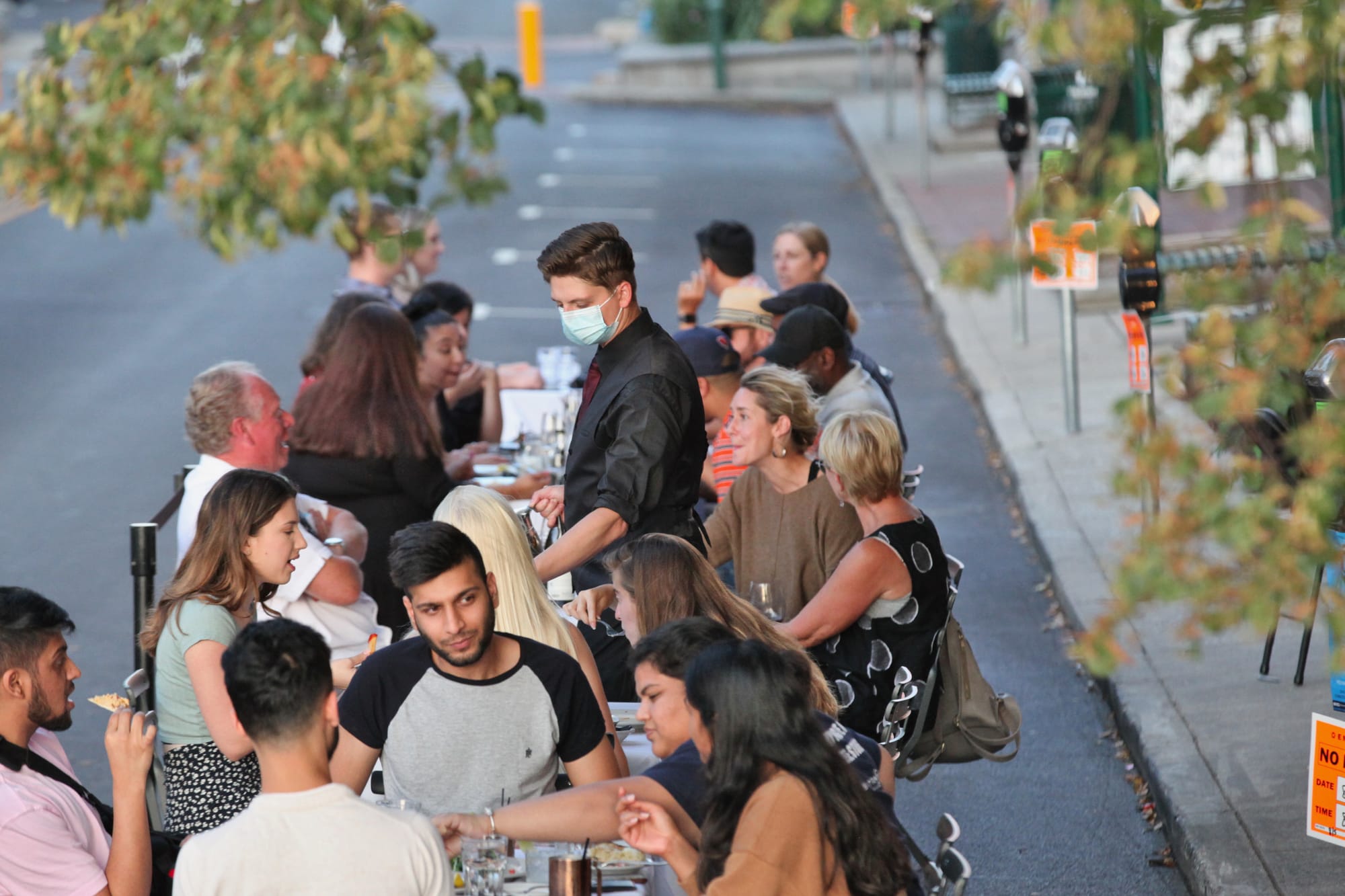
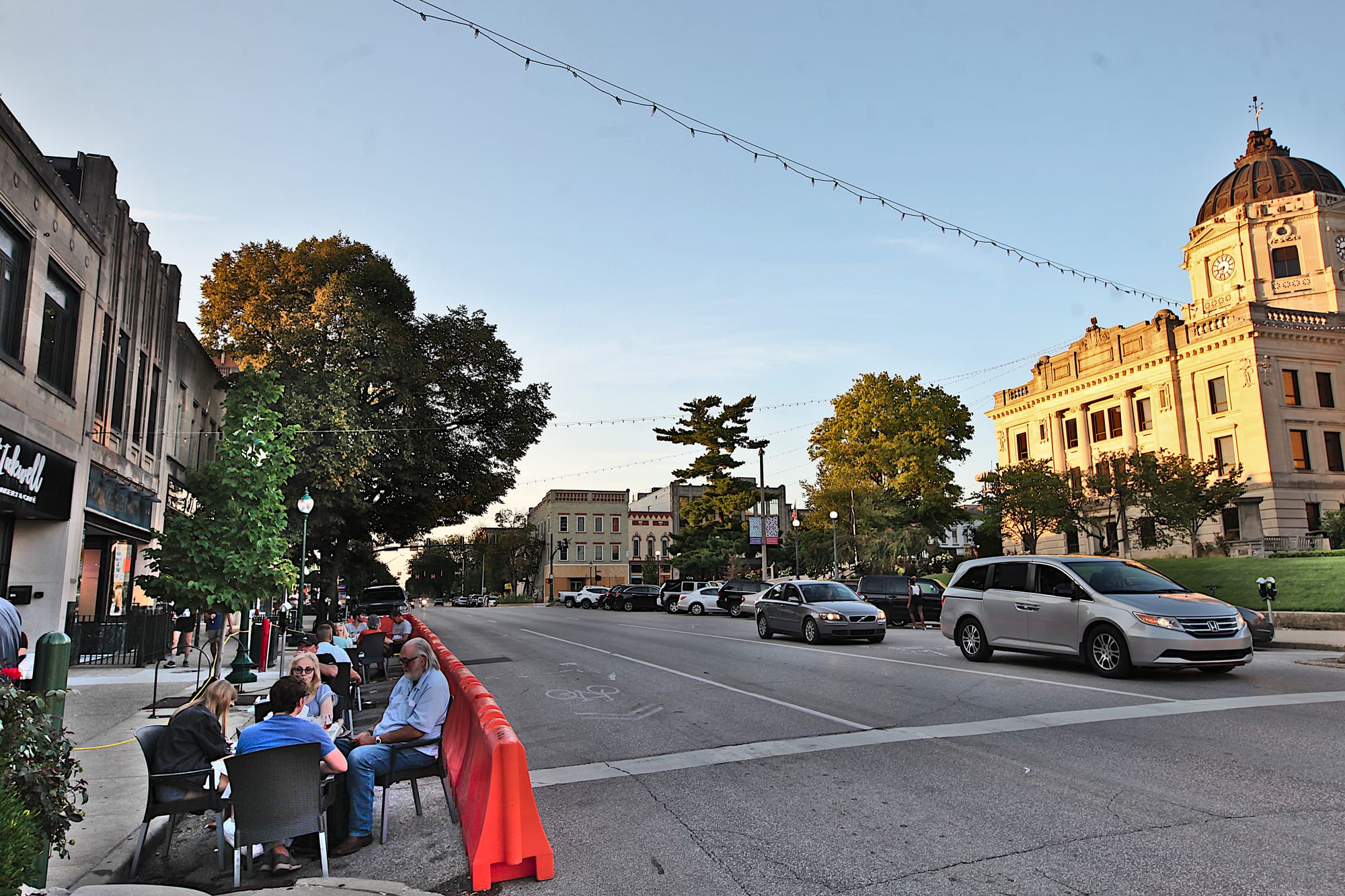
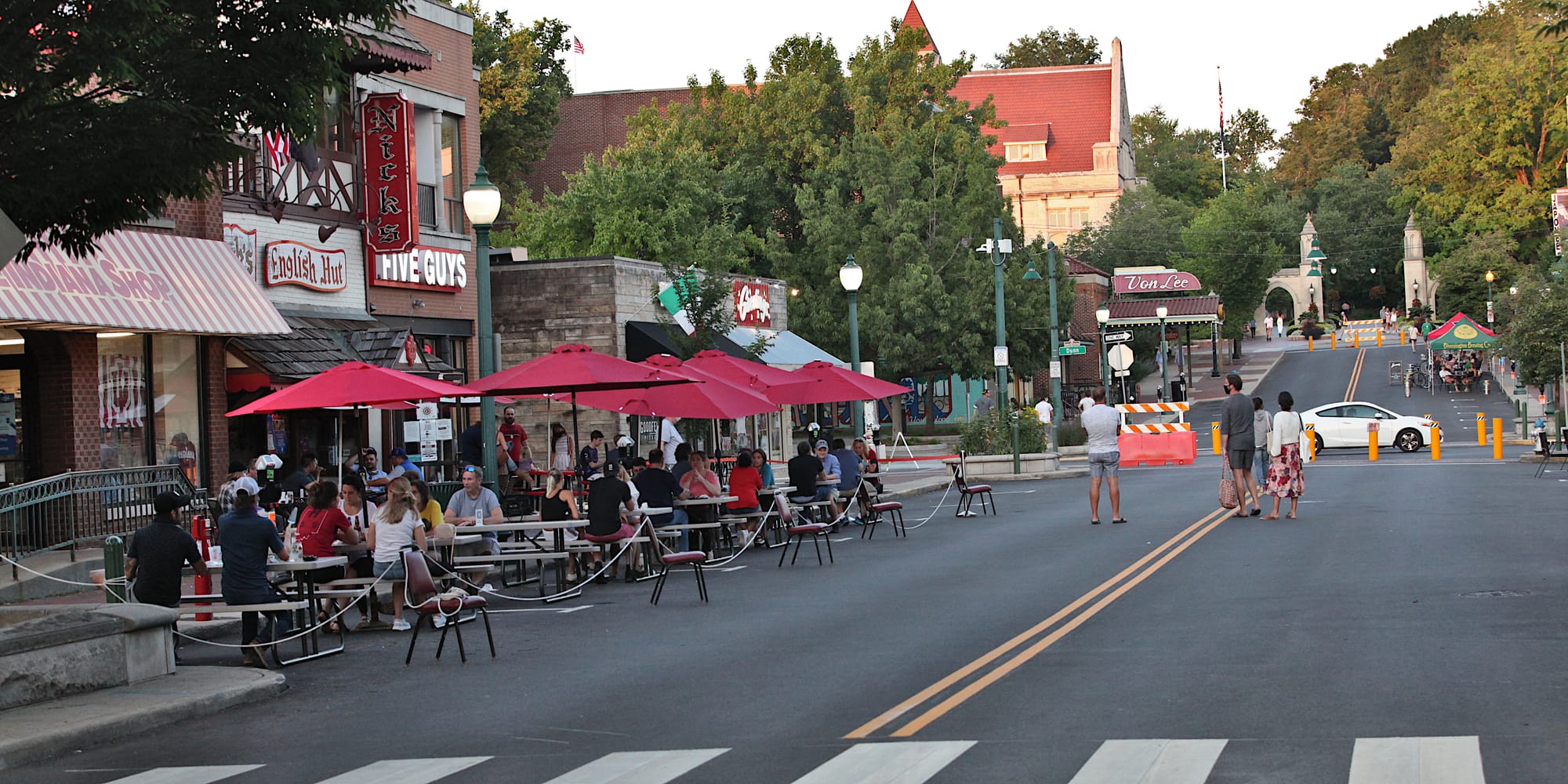
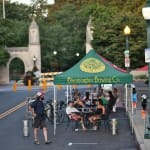
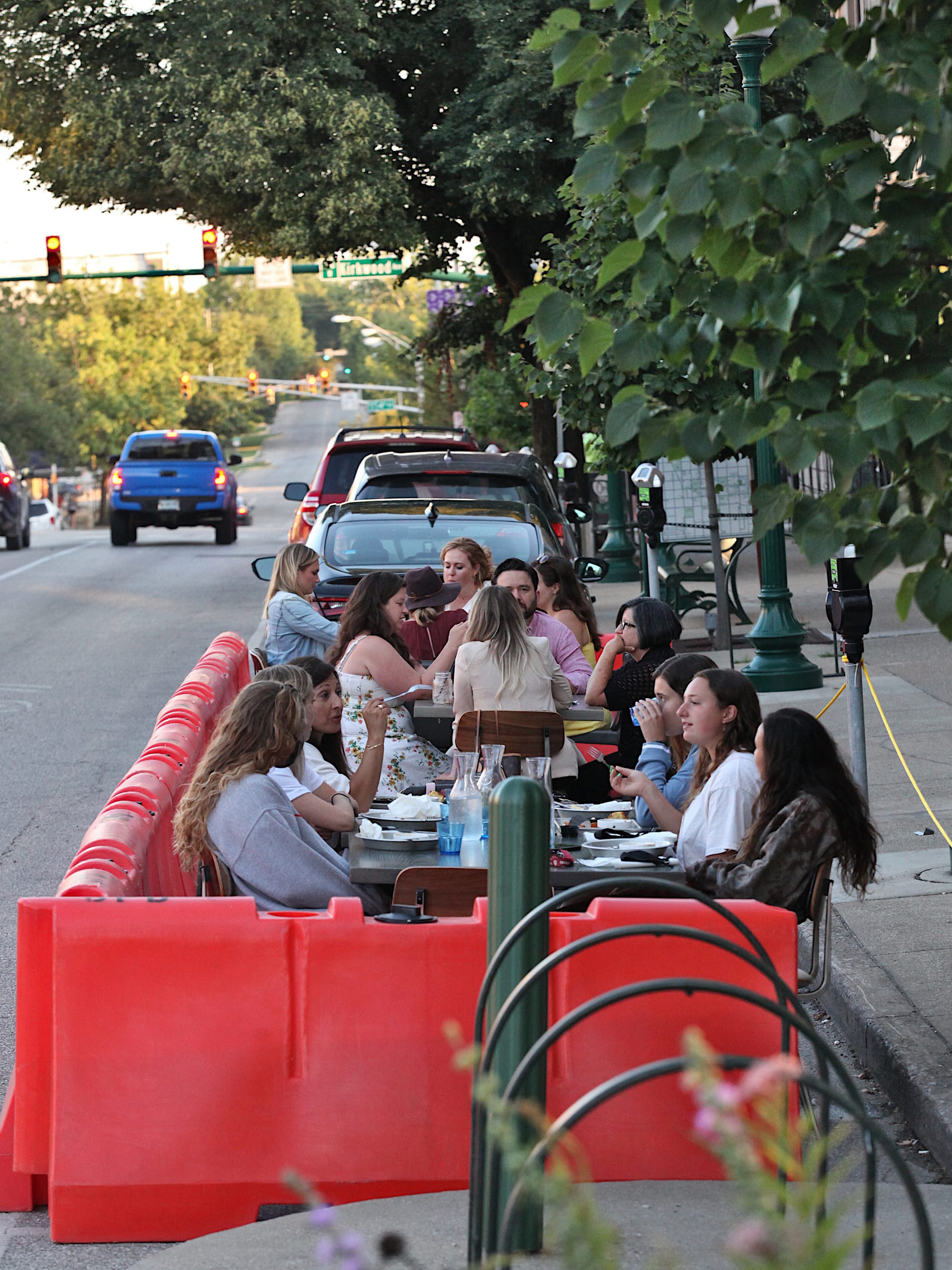
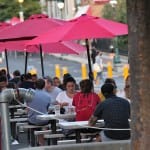
At least through Sept. 30, patrons of some restaurants in downtown Bloomington will be able to feed themselves at tables set up the street, in spaces where drivers normally feed a meter to park their cars.
Called “parklets,” they’re one of a few different approaches the city is taking to help restaurants recover from the impact of the COVID-19 pandemic. Indiana governor Eric Holcomb’s current 4.5 order leaves in place a restriction on restaurants preventing them from operating at any greater than 75-percent capacity.
The parklets launched this week with a couple of blocked-off areas on the west side of College Avenue on the courthouse square. The concept won approval from the Bloomington board of public works at its Aug. 4 meeting.
Other measures meant to help boost local downtown retail business include pick-up-drop-off (PUDO) zones—which take up a total of 54 metered parking spaces. The PUDOs have been temporarily marked with signs designating them as 15-minute free parking spots. They’re supposed to provide quick in-and-out access for orders that are called ahead, either to restaurants or other retail stores.
PUDOs and parklets were both approved by the board of public works through Sept. 30. That timeframe could be extended.
In June, the board of public works and the city council both approved the temporary waiver of some local regulations on signage for businesses and relaxed some restrictions on the use of the public right of way. The relaxation of those restrictions made possible the weekly weekend closures of Kirkwood Avenue.
Up to this weekend, Kirkwood has been closed for just two blocks, between Indiana Avenue and Grant Street. The street closures are achieved with the city’s new yellow bollards, which fit into slots built into the newly refurbished crosswalks on Kirkwood.
Nick’s English Hut, Village Deli, and to a limited extent Lennie’s, have taken advantage of the street spaces.
In mid-June after the first weekend of the Kirkwood closure, Nick’s owner Susan Bright told The Square Beacon, “It was a great success, brought lots of people to our outside and inside dining. …Customers seemed thrilled to go out, enjoyed our socially distancing setup and our friendly service.”
This weekend, the block of Kirkwood between Washington and Walnut streets, was also closed off. That allowed Uptown Cafe owner Michael Cassady to fit 50 seats outside on the asphalt.
The idea of a parklet is not necessarily to increase capacity of a restaurant. It’s to make customers less susceptible to potential spread of COVID-19, than they would be if they were dining indoors.
A memo from the city’s department of economic and sustainable development’s special projects manager, Kaisa Goodman, lists out benefits of parklets. Benefits include: stimulate the local economy; meet local and state health and safety guidelines relating to COVID-19; expand outdoor dining space for health and safety; help meet customer demand for restaurant space; and increase aesthetic appeal of downtown.
Parklets launched with a three-space span in front of The Tap and a two-space span at the opposite end of the block, near Social Cantina.
More could be added in other areas, based on applications from other restaurants.
The application addresses ADA (Americans with Disability Act) guidelines. The initial published first version of the application said:
[old wording]
Applicant businesses are responsible for:
…
Compliance with ADA guidelines, both in the parklets themselves and on the sidewalk between the restaurant and the parklets.
Would that mean restaurants have to install portable ramps to bridge the curb between the sidewalk and the parklet?
Asked by The Square Beacon to clarify the impact of the application’s wording, Goodman responded by saying the ideal situation would be if there are accessible tables in an outdoor area comparable to those in the parklet.
As an example, Goodman gave Social Cantina, where there’s other outdoor dining available besides the parklet. “The goal is to try to have accessible outdoor dining,” Goodman said. But it’s not required under the parklet program that accessible outdoor dining be provided, she said.
The wording of the application was updated to try to clarify how it works, Goodman said. The new wording reads as follows:
[new wording]
Compliance with ADA guidelines: The sidewalk between the restaurant and the parklet must remain clear of obstructions and in ADA compliance. There should be ADA-accessible outdoor dining available at the establishment, either in the parklet or in other outdoor dining space, if readily achievable.




Comments ()